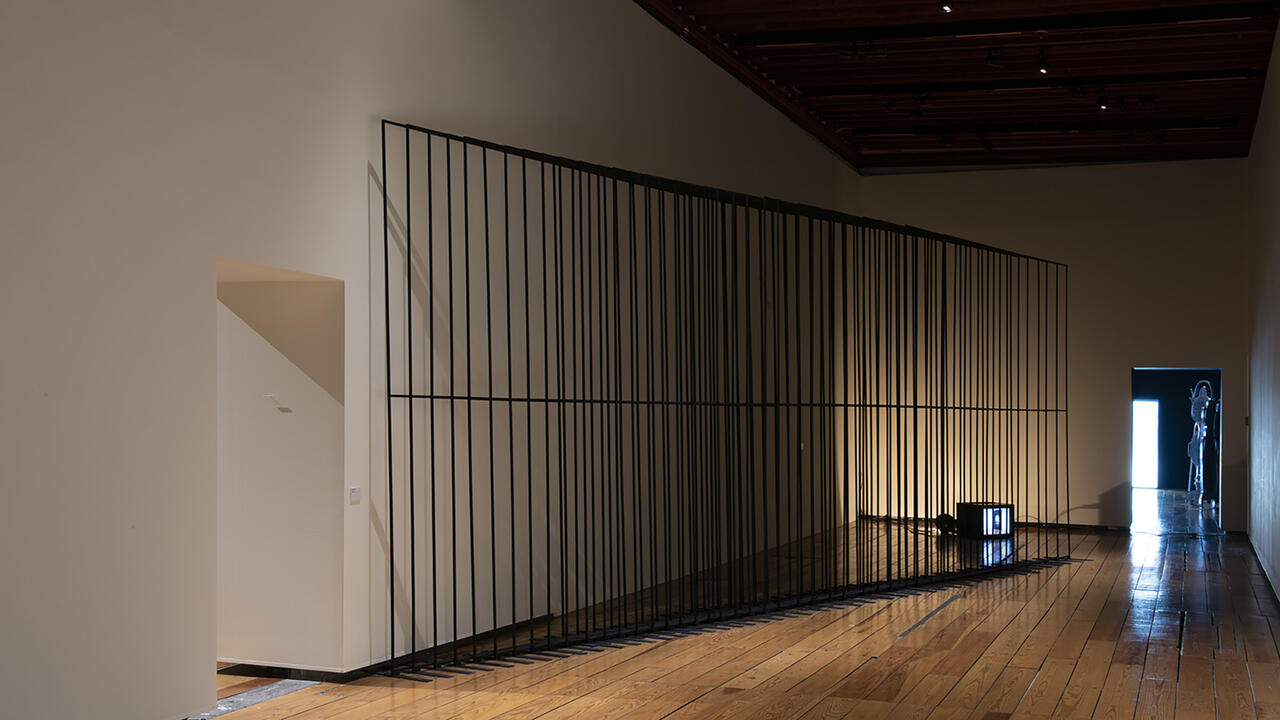Thing

Focusing on young sculpture coming out of Los Angeles, ‘Thing: New Sculpture from Los Angeles’ had specific and somewhat hermetic parameters, rooted in the currency of the object and supposedly ‘new’ formal gestures and types of material experimentation. Any exhibition of this kind accepts an impossible task: corralling art-making tendencies in an effort to define a moment or movement caught on the fly. As the catalogue essay states, the show examined the perceived ‘reinvestment in objects’ on the part of young, or young-ish, LA-based artists; but in contracting the expanded field of sculpture back to object-hood -– its most traditional and commercial condition – it also prompted questions regarding the forces driving this object-impulse.
‘Thing’ appeared amid the ongoing debates about the commercialization of the graduate schools, the studio as a space for professionalization rather than processes of risky experimentation, the politics of circulation of work by critic-championed emerging artists, and even a crisis in the definition of ‘emerging’ artist in Los Angeles and elsewhere. Co-curated by Aimee Chang, James Elaine and Christopher Miles, the show of 45 objects by 20 artists reflected the dynamism of the local cultural climate and gave public exposure to young practices. (The Hammer is known for a commitment to the work of emerging artists arguably unmatched in scale and visibility by other institutions.) But did it represent the diversity of production and the multitude of contexts in which objects are constructed on the ground in this city? My fear was that this vital show would be monolithic, prioritizing trends of the ‘here and now’ over questions of breadth and digression.
The danger of such shows is that they too often rely on fixed and inflexible propositions, encompassing work without contradiction or confrontation. However, ‘Thing’ was presented as a non-category, and the potential of its indeterminate framework was persuasive. You could interpret the notion of ‘thing’ any way you chose – as either a self-conscious provocation or a way of eclipsing complexity within the perhaps trite and populist categories of newness and ‘thing-ness’. Perhaps the only overt destabilization of the ‘thing’ premise was Nathan Mabry’s Thing Thang (2004), which spelt ‘THANG’ on the gallery wall using ‘bones’ fabricated from white bone china – kitsch matter and vernacular slang used in a slippery restatement of the show’s vague thesis.
The curators’ earnest articulation of object-hood addressed the oddities of the sometimes quirky objects selected for this dense but elegantly intelligible installation. Hannah Greely’s lifelike dog-as-doormat Muddle (2004) was reminiscent of New York artist Michael Phelan’s taxidermist’s hound lying on a rug, Champ (1999). Jedediah Caesar’s Geode (2004), a coagulated archive of debris sealed inside a ball of synthetic resin, reminded one of the kaleidoscopic archaeology of Kelly Walker. But in navigating the exhibition I found myself craving alternative dialogues beyond a closed exchange between Angelinos, wondering how or even if this particular work spoke to the conditions of a specific location and sense of present-ness. Were these aberrant objects? Were they truly alien to contemporary sculpture made elsewhere in America? I attempted to locate archetypal things to test the rigidity of such a concept. Krysten Cunningham’s collection of crafty, yarn-heavy Modernist totems signalled an artistic inclination towards accumulation, collection and fetish. Accordingly, Kate Costellos’ featureless forms, spectral portraits and vague curios were marked by an antiquated treatment of surface. Made with her signature mix of cement and clotted paper, one object resembled a haggard playroom hobby-horse – perverse, manic and phallic.
Aragna Ker’s work responded most directly to the question of what happens to the subject in light of the primacy of the object. In the Spaces of Multiplicity (2004), Ker’s rickety assemblage of decorative mouldings, multicoloured tiles and a quasi-sacred pediment, is vessel and memorial, home and coffin all in one – a quaint and clunky monument to any number of communities and localities articulated through a childlike mistranslation of architectural elements. Masked by a puerile façade, this crude artefact reflects Ker’s ambivalence towards cultural hybridity. Here, as elsewhere, the politics of objects are made palatable through devices of play, camouflage and the distancing effect of indeterminate abstraction.
Ironically, the show’s strongest work said more about art-making than about L A-based artistic heritages. Matt Johnson’s bronzed banal icons of everyday objects slyly crept into the realm of contemplative representation. His Two Orange Peels (2003), painted bronze casts of orange skins clumsily squished into the crude shape of an elephant, is a cagey, assisted ready-made made strange by its medium. The alchemical Change (2004), comprising indistinguishable replicas of US coins using materials of greater value than those of the nickel and copper originals, like Vija Celmins’ meticulous reproductions of beach pebbles made a generation earlier, contributes to a sculptural language of inconspicuous inauthenticity, Hyper-realist and metaphorical at the same time. Correspondingly, Rodney McMillan’s Wood Panelling (2004), a sliver of a dated, domestic wall treatment inserted into the exhibition space, marks a generational drift towards readapting objects by restaging their context and use. Formally engaged with legacies of various kinds of American Conceptualism, McMillan’s work, like that of many of his contemporaries, reverberates beyond the trappings of novelty and locality.














